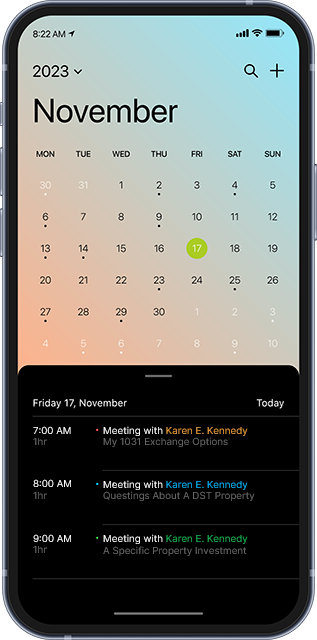There are seven recommended steps common to most Section 1031 tax deferred exchange:
BEFORE YOU CLOSE ON THE SALE OF THE RELINQUISHED PROPERTY:
Step 1: Consider retaining the services of a certified public accountant or an attorney with tax deferred exchange experience to assist in planning for an exchange.
Step 2: Engage a Qualified Intermediary, or “QI,” (also called an Accommodator), being sure to name the QI as the principal in the sale of the relinquished property and in the purchase of the replacement property.
Step 3: Sell the relinquished property, making sure to include a cooperation clause requiring the buyer to cooperate with the seller’s 1031 exchange, and instruct the escrow officer or closing agent to order exchange documents from the QI.
AFTER CLOSING THE SALE OF THE RELINQUISHED PROPERTY
Step 4: Escrow closes on the relinquished property, with the closing statement showing the QI as the seller, and sales proceeds from the relinquished property are sent to the QI and placed in a separate segregated trust account.
FAILURE TO SEND SALES PROCEEDS DIRECTLY TO QUALIFIED INTERMEDIARY FROM ESCROW WILL RESULT IN INABILITY TO EXCHANGE.
Step 5: Within 45 calendar days of the close of escrow of the relinquished property the exchanger identifies one or more replacement properties and sends written notice of this to the QI.
Step 6: The exchanger executes a purchase contract with the seller of the replacement property, making sure the cooperation clause is included in the purchase contract, and naming the QI as the buyer of the replacement property.
Step 7: Within 180 calendar days of the close of escrow of the relinquished property, the exchanger instructs the QI to transfer funds to close escrow and sends 1031 exchange-related documents to the escrow company, and the sale closes with the closing statement showing the QI as the buyer on behalf of the exchanger.
- After the replacement property has closed escrow, the QI will send a final accounting statement to the exchanger. The statement will show that funds have come from one escrow directly into another, all without the taxpayer having constructive receipt of the funds.
- Real estate investors should note that although the qualified intermediary is indicated as the seller and buyer on the purchase contracts, the deed and title are always from the taxpayer to the buyer, and from the seller to the taxpayer.









